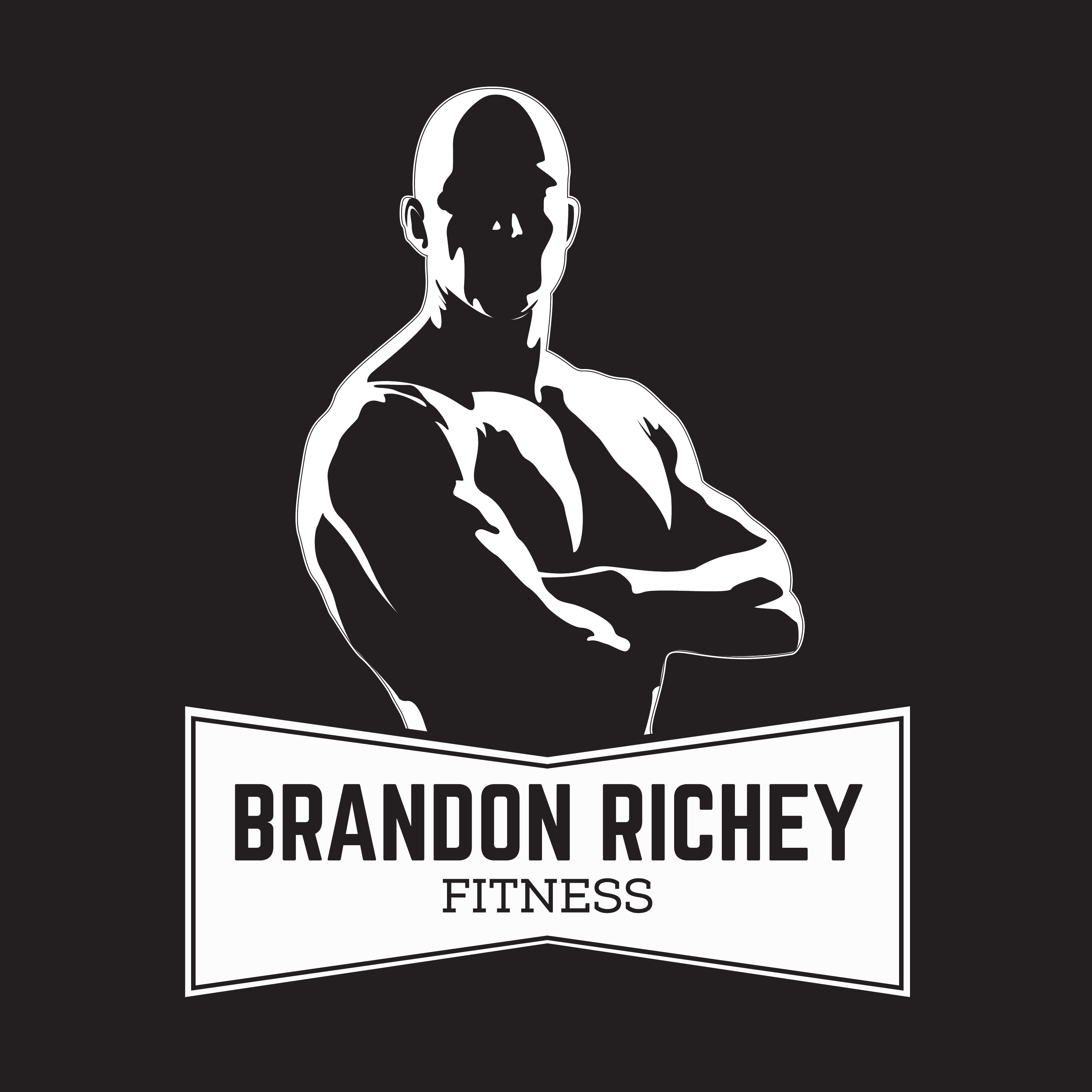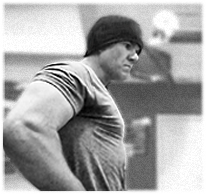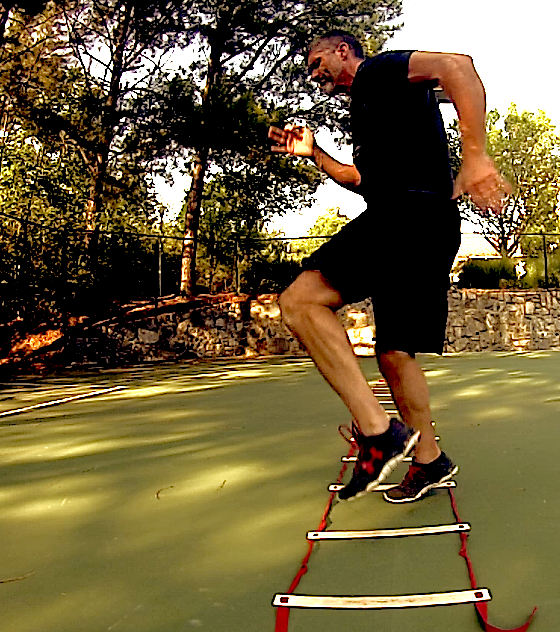
So What Is Crossfit All About?
by: Brandon Richey
So What Is Crossfit All About?

So I remember as a kid growing up Saturdays were the best. In my youth I remember either going over to one of my friends’ house to sleep over on a Friday night, or they would visit to do the same with me, and Saturday mornings we would be up first thing to watch NWA wrestling. Yes, we’d be there in the living room practicing flying elbows off the armchair of the couch and many times would get into trouble for either breaking something in the living room, or for one of us having to get a little first aid on a busted lip. It was a lot of fun. Yes, you’ve got to keep on reading to see where I’m going with this.
The Mystery Of Crossfit…
You see during those Saturday mornings the fun part was pretending to be either one of the craziest wrestlers on TV or you would simply pick your favorite to portray in the middle of the living room floor (aka the squared circle or ring). My friend Bryan used to like playing the Great Muta (pictured at the beginning of this article). You see the Great Muta was a mysterious wrestler that nobody really knew anything about, but everyone feared because he was so unpredictable. His finishing move was that he would be able to mysteriously spit a green mist into his opponents eyes before kicking them in the head to finish them.
This is definitely another way to train the body!

Getting on point much like the Great Muta Crossfit seems to have this sort of unknown mystique and questionable reputation as well with much of the general public. You see lately I’ve been getting questions about Crossfit. The question is usually consistent; “So coach what is Crossfit all about?” Before I answer that I want to preface by saying that I’m not a Crossfit coach. I’m a Certified Strength And Conditioning Specialist (CSCS) and I develop my programming based upon the needs of the athlete, or athlete’s in training. If you follow this blog regularly you probably already knew that, but for the newbies I figured I’d get that out of the way.
This guide goes to show there is more than one way to build superior strength!!!

Now having said this I’m open to different methods of training, but to have an understanding of the world of physical preparation one must understand that there are many ways to stress the body for the purpose of developing fitness and strength. I’m going to get to the answer about what Crossfit is all about, but I believe a lot this doubt about Crossfit comes from a couple different things. For one Crossfit is really just about cross-training which is not new to the world of fitness. Secondly, videos like this don’t generally help the reputation of Crossfit to a large degree.
You can see why people might be getting mixed messages about what Crossfit is and why people would be asking the question I posed earlier. Now I know better and I’ll tell you that this video doesn’t depict what Crossfit should be about if implemented properly and done so with a competent coach at the helm.
You see my good friend and retired Navy SEAL Brad Mcleod runs a Crossfit gym (Crossfit Grinder) and I will tell you that he does an absolutely awesome job with his athletes. Remember that EVERY program is only as good as its coach, period end of discussion. So What is Crossfit all about? Well check out this little video I did to give you my explanation on the matter.
I hope that helped to make things a bit more clear on the subject at hand. You see Crossfit is essentially just one way to train the body. Like the Great Muta that utilized a finishing move by spitting a green mist into the faces of his opponents it’s only one way to finish someone inside the squared circle.
There are other ways to finish people inside the squared circle. I didn’t mention one of my favorite wrestlers earlier growing up, but it was Rick Flair and he was great at finishing out opponents with a bunch of smack talk and his infamous figure-4 leg lock. Remember there is more than one way to train the body and more than one way to take out someone in the middle of the squared circle!
The point is that there is just NEVER one way to go about problem solving. If any coach ever tells you that there is only one way to get stronger or more athletic turn and run away. Crossfit isn’t a bad program for what it is made to do, but it is not the single answer for getting a stronger more athletic body either. Remember the 2 MOST important qualities that matter with any program is the coach and how to design for specificity.
Chances are if you have a good coach then the other part of specificity will be taken care of within the scope of the training program. I hope this helped to clear some things up. If you have any questions about the figure-4 leg lock, or some other killer strength training inquiries please drop me a comment in the comment box below this article. Remember most anyone can train hard, but only the best train smart my friend.
Related Articles:
Strength Training Faith…Have You Bought Into What You Are Doing?
Which Training Program Is The Best? Crossfit? The 5×5 Method? Something Else?
Strength Training Principle…Punching Through Plateaus Like A Nuclear Powered Machine!!!
Training Intensity: Always A Ball Buster Or Not?
Muay Thai Strength And Conditioning…Training For A Mule Kick!!!
So What Is Crossfit All About?
Leave a Reply
You must be logged in to post a comment.






Hey Brandon, a good overview of CF. A major problem surrounding the program is that it tends to hold itself out as some kind of one off panacea … the proverbial “magic bullet” and that’s pretty indicative of a fad driven by marketing concerns.
Here’s a defining comment from a Crossfit web site: “We have sought to build a program that will best prepare trainees for any physical contingency — not only for the unknown, but for the unknowable.”
To an informed reader, the over the top hype and outlandish assertions are crystal clear. However, allow me to briefly touch upon just two instances of absolute hype being presented as fact. Take a look at any Crossfit program and you will most often times find low weights and high reps as a general format.
S.A.I.D. is a principle that has withstood the test of time dating back to the late 1950s. Within the greater discipline of Sports Science it is largely conceded that “generalization” of training regimens is at best modest and most often times non-existent, e.g., running repeat sprints will not improve your swimming or rope climbing ability.
In the same vein, Crossfit will not in any fashion increase or improve your ability to exert maximum or near maximal force in any given range, or plane, of movement. The muscular and neurological adaptations associated with Crossfit training protocols do not generalize to anything other than Crossfit like activity.
Returning to the hype posited as truth gleamed from the Crossfit web site I found, the absurdity of being capable of meeting any and all physical challenges via Crossfit is manifestly self-evident. Any activity requiring extremely brief physical movement at or near the maximum potential in terms of force load, e.g., moving a fallen tree out of the road, evades Crossfit. At the other extreme, any activity that approaches the upper limits in terms of physical endurance within a single motor skill activity, e.g., having to swim three miles to shore as your boat ran out of gas, will not be supported by Crossfit. The large grey area between the two extremes referenced above may or may not in part be supported by Crossfit training … personally, I prefer not to guess so I train with a high degree of specificity.
Crossfit does itself a grave disservice by claiming to be the “Alpha-Omega” of fitness protocols as clearly no such animal exists. Years ago, I had an anthropology professor who stated “There is no such thing as survival of the fittest as there are many kinds of fit.” Point taken, Professor Fernandez, point taken.
As an old friend of mine is fond of saying “Horses for courses.” … I prefer S.A.I.D. and leave it at that. Doc
Doc,
This is awesome. I am always breaking down the S.A.I.D. principle. Specific Adaptation To Imposed Demands is all about specificity. You’re exactly right, if you want to get better at swimming then go for a swim, if you want to get better at climbing then go climb. I’m always hammering this home to my readers as well as trying to clearly communicate the distinctions of various programs, their design, and developmental purpose.
Crossfit has been a huge marketing machine. It’s a program that will offer some strength/endurance qualities to a trainee, but the true animal of Cross-Training where the trainee actually goes for a swim, a climb, strength trains, runs, rows, etc.is something I haven’t seen fully replicated within Crossfit programs. I think a true cross training environment, if the purpose is to cross train with real world tasks, would be to have a weight room, indoor climbing wall, swimming pool, log totes, etc. as this would be an environment more catered to train specific real life physical adaptation, but then again one could still argue that’s specificity too, right?
With all this being said I just want to make the differences clear among various programs so that folks do understand the value of S.A.I.D. Oh and by the way I love the quote from your old professor friend “There is no such thing as survival of the fittest as there are many kinds of fit.” I hope you don’t mind, but I may have to borrow that one at some point in time! Thanks again for your feedback Doc, and God bless! 🙂
@ Brandon – “I think a true cross training environment, if the purpose is to cross train with real world tasks, would be to have a weight room, indoor climbing wall, swimming pool, log totes, etc. as this would be an environment more catered to train specific real life physical adaptation, but then again one could still argue that’s specificity too, right?”
Exactly, right on point. Personally, I’m an old man and really do not care to be “Fit to fight for a Kingdom” as my goals are more modest. I enjoy a superior level of strength in a wide array of ranges, decent cardio-vascular fitness, good flexibility, and as my Son’s (he’s 19) GFs have stated in the past “Damn Doc, you look good” 🙂
Just my observation, however, it seems “athleticism” is lacking in the training of many people. Let’s take the old school 5 Sets of 5 Reps using large compound movements as an example. Will a person get stronger using such a program? Sure, if properly applied and Power Lifters have been working with this training scheme for decades with much success.
The question in my mind then becomes … and just what can you “do” with the strength increase realized? If someone answers “Hoist more weight within the lifting scheme.” I’m pretty much finished speaking with them as unless a person is a competitive Power Lifter I see no value in their approach beyond establishing a good foundation in strength.
A quick word regarding “foundation” … it’s a start point and you build a foundation exactly one time. A person can always revisit the foundation now and then in order to pull a little maintenance, but it’s not an end point.
Back to athleticism, I advocate for supplementing strength work with some form of fine motor skill activity and preferably one that contains a fair degree of complexity. Keeping in step with what’s in vogue these days, I would suggest grappling, kick boxing or some variant thereof. For ancient ones such as myself, Tai Chi, Bagua, racketball, etc., fit the bill nicely. Incorporating strength gains into movement patterns that enable the development of athleticism is, to me, the name of the game. Otherwise, a person is restricted to being just another “Gym Rat” walking around with all the physical grace of a three day old dead man.
I’m certain Dr. Fernandez would be appreciative of your spreading the word regarding his definition of fit. Best regards, Doc
Doc you bring up another excellent point about the lacking of athleticism being built into the fabric of many strength programs. I am a huge proponent of this and like to refer to this portion of my own program as “athletic performance development” or just “athletic performance” for short. Essentially it is a portion of my program that I offer that integrates the development of speed, agility, and power development which in turn will feed the strength component of a trainee’s program.
I can personally tell you that it’s been tremendous for me for years and has done wonders for keeping the ‘ole metabolism kicking along in hight gear. 🙂 Don’t get me wrong I love pounding iron, but as you pointed out it’s nice to incorporate drills that influence different energy systems and challenge the body with coordination, speed, and mobility. I agree with you that this component is missing in most programs. Great discussion my friend.